‘Desert Sleds’ are among the hottest vintage bikes these days; a broad audience has discovered the amazing purpose-built off-road racers adapted for rough long-distance events in SoCal. In the early 1960s, these were ordinary road bikes converted to off-roaders, as with this gorgeous 1963 Triumph T120 Bonneville owned by Steve McQueen. His T120 is a first-year unit-construction Bonnie, which was 30lbs lighter than the pre-unit version, had a stronger frame and better handling, was generally less fussy to live with and was less prone to oil leaks. As noted in the June 1964 Cycle World article below, Steve’s bike was modified by his buddy/mentor Bud Ekins, a veteran desert racer and occasional ISDT entrant, who knew what was required for a reliable off-roader: shed weight, protect the engine and ancillary parts, circulate more oil, and keep dust out of the carbs. It helps to add extra seat padding for long bumpy rides, too. The result of Bud’s work is purposeful, and not intended as a show bike – he didn’t plate or paint anything for gloss, but preferred a clean but workmanlike finish, as a racer should.
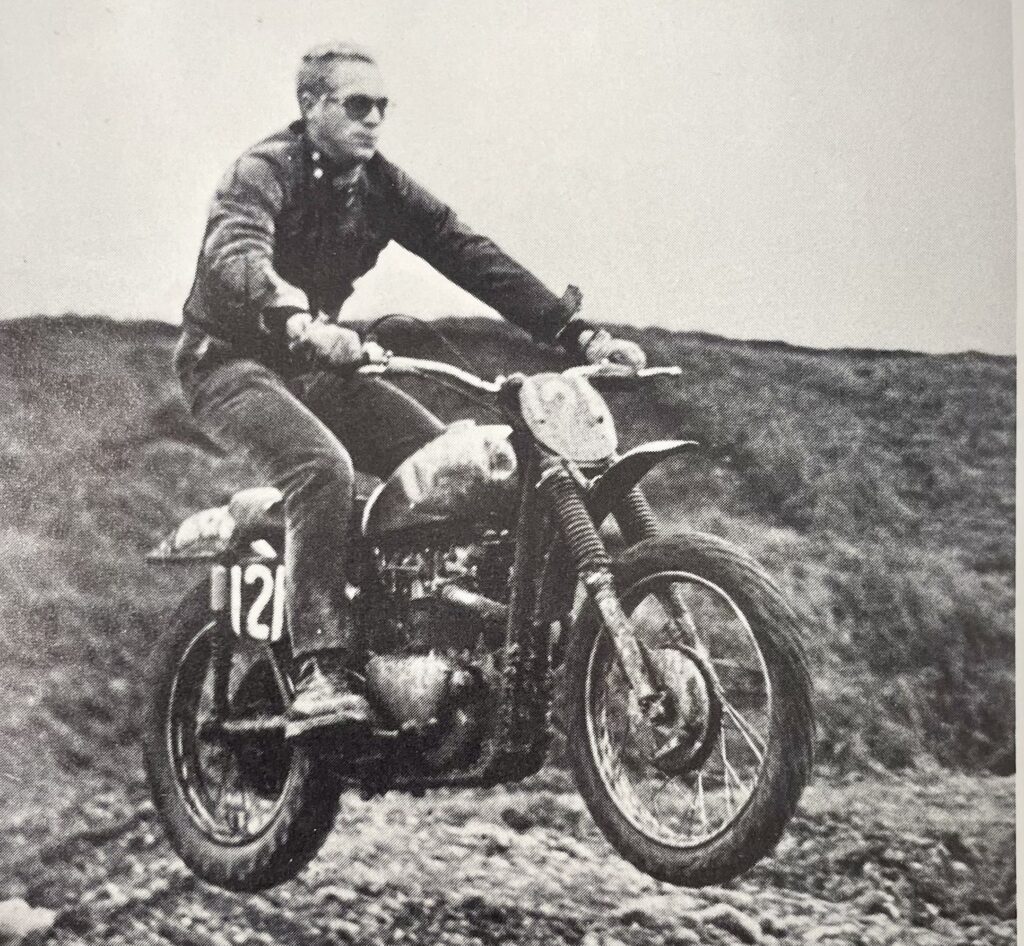
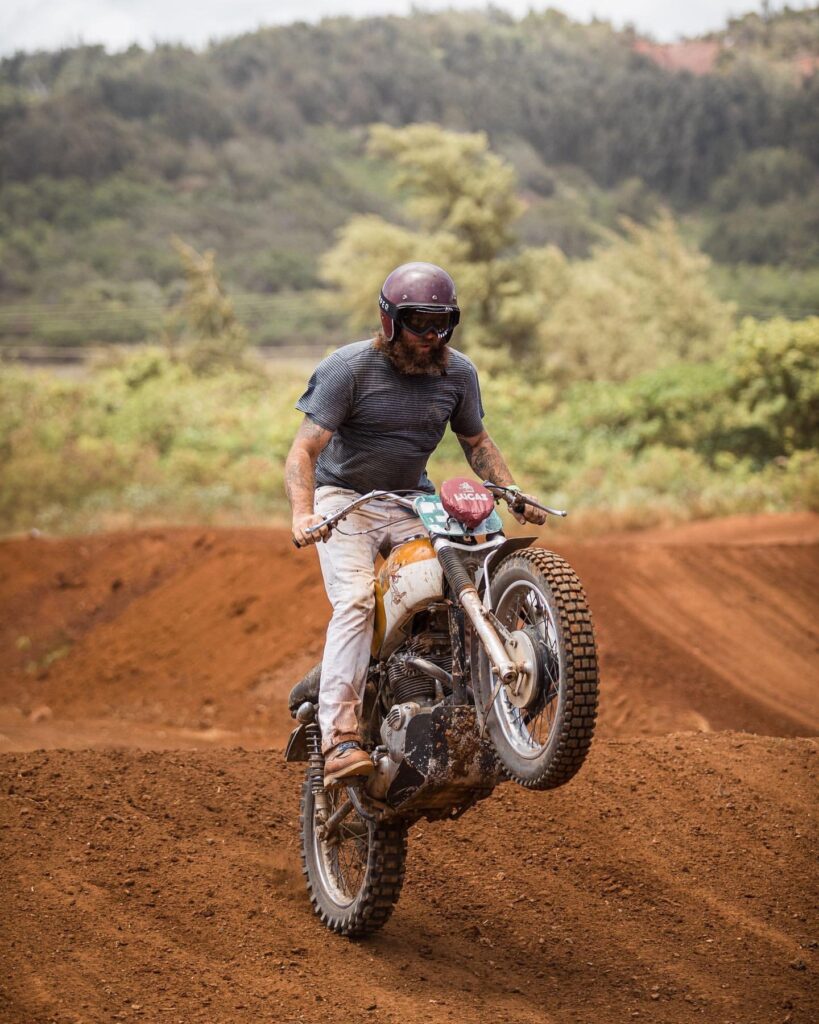
Winning desert races is what this machine was set up for. It is the mount of actor Steve McQueen, who recently won the novice class in a one-hour desert scrambles. The victory only proved what a close look at his Triumph Bonneville suggests: McQueen takes his motorcycling seriously.
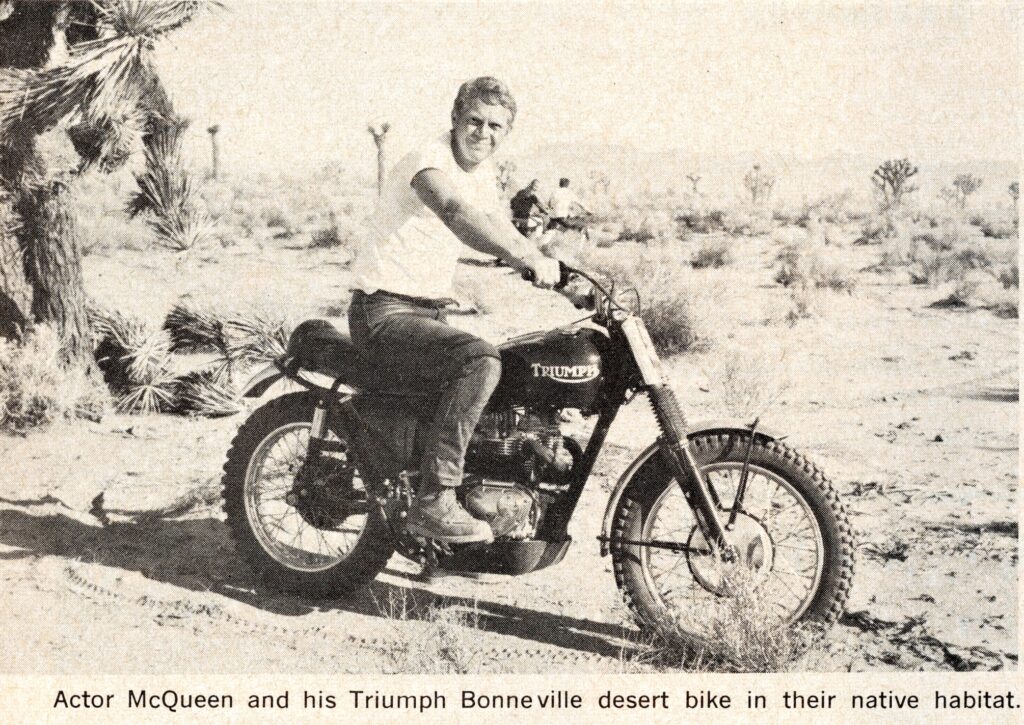
It takes some modifications to win the rough, dusty hare ‘n hounds, scrambles, and enduros that are popular in the southwester desert. McQueen’s machine was prepared in Bud Ekins’ Sherman Oaks, California shop. they started by replacing the stock wheel with a 1956 Triumph hub and 19″ wheel to reduce unsprung weight. The forks were fitted with sidecar springs and the rake increased slightly by altering the frame at the steering crown. The rear frame loop was bent upward to accommodate a 4.00 x 18″ Dunlop sports knobby and to it were welded brackets for the bates cross-country seat. The bars are by Flanders, with leather hand guards, and the throttle cables run over the tank, through alloy brackets to the twin 1-1/18″ Amal carburetors.
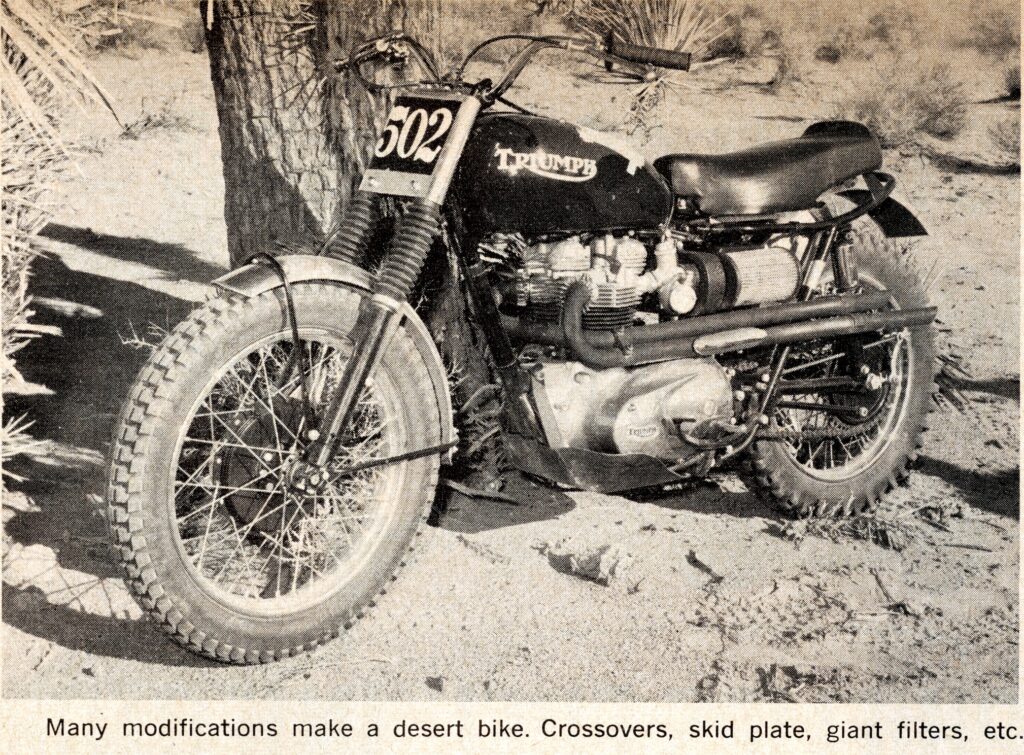
A Harlan Bast skidplate protects the underside of the motor, the footpegs were braced and the rear brake rod was increased to 5.16″ diameter and rerouted inside the frame and shock (where sagebrush can’t damage it). The oil tank was modified to increase its capacity and bring the filler out the side from under the seat. It also serves as part of the mudguard, saving weight.
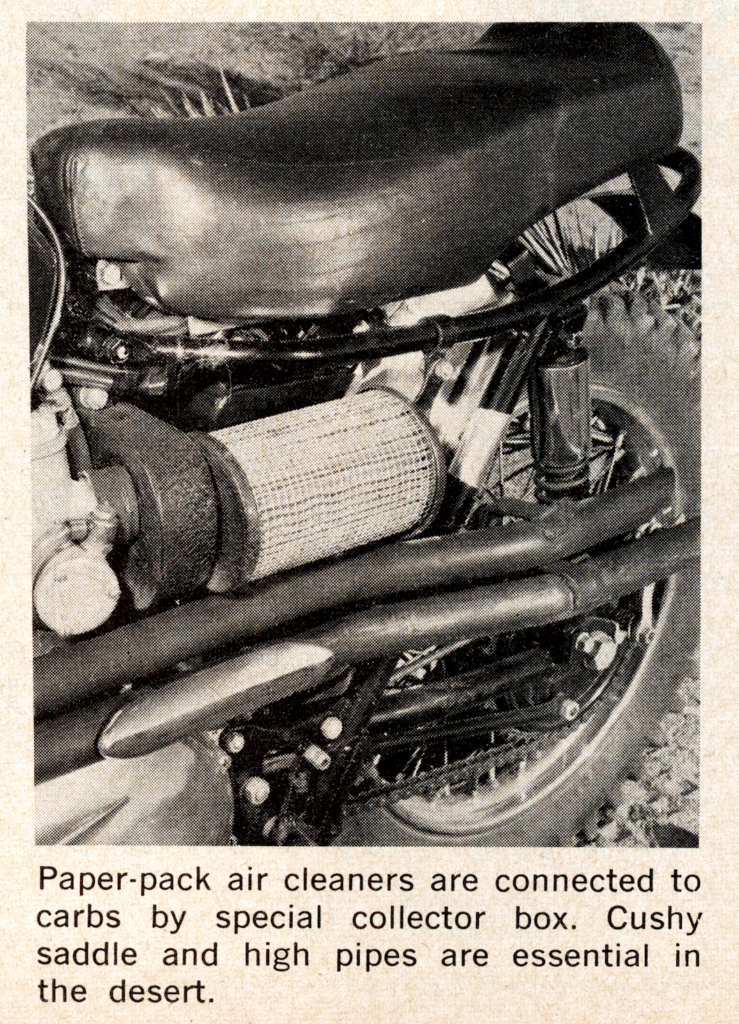
The engine is basically a stock Bonneville but the compression was lowered from 12:1 to 8-1/2:1 for reliability and the sagerush-snagging oil pressure indicator was converted to a pop-off relief valve with a return line back to the oil tank. McQueens runs a Jomo TT cams and Dodge RL47 platinum tip plugs.
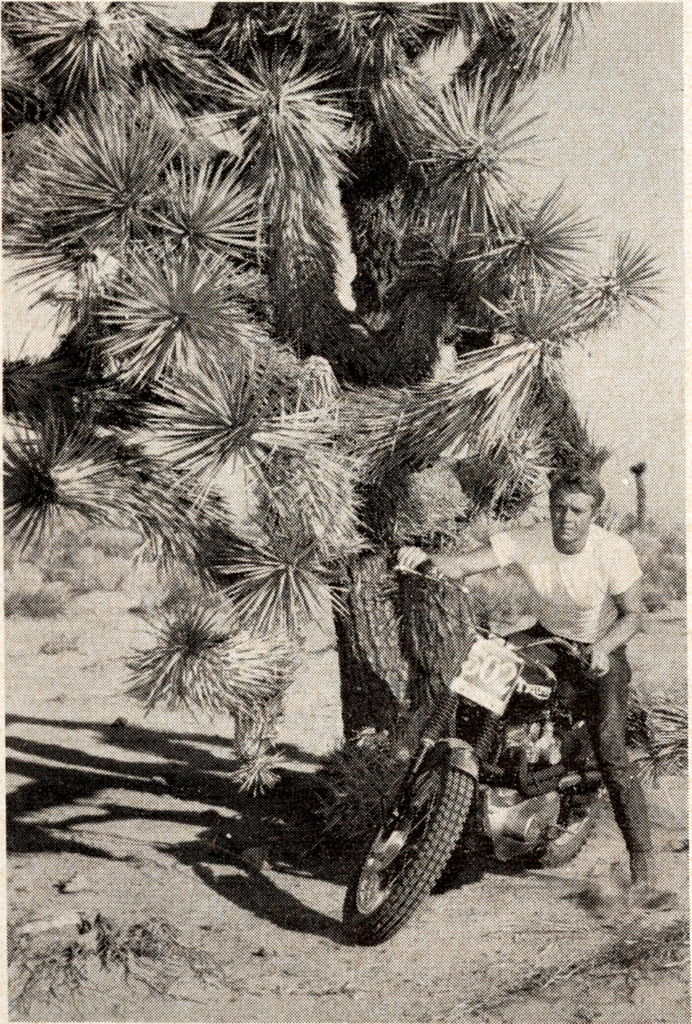
The important job of filtering all that dirt out of the desert air is handled by paper pack air cleaners connected by a special collector box to the carbs. This box is finished in black wringkle-finish paint while the tanks are dark green. The cross-over pipes are Ekins’ design and are left unplated for better heat dissipation. Perhaps if McQueen were riding this cycle in the movie, he could have made his ‘Great Escape’.
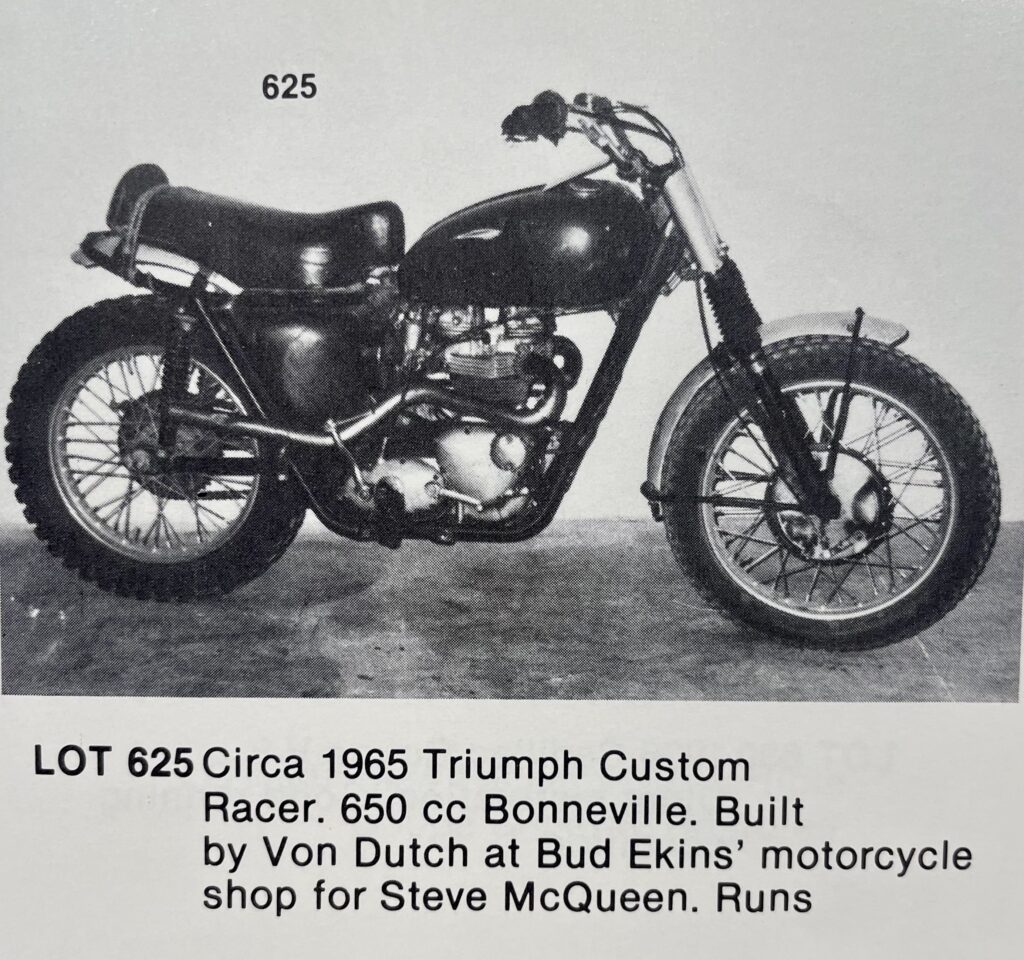


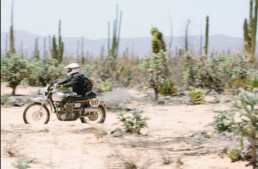
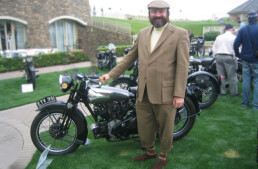
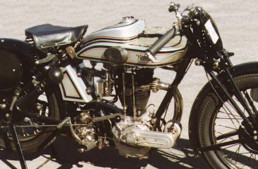
I’m kind of surprised there hasn’t been a few replicas and tribute customs based on MQ’s desert bike .. I mean really … its usable … streetable ( with the right exhaust ) and all bets are more fun than anyone has a right to with their cloths on .
Happy turkey day … as the Brits would say .. stuff yer cake holes … and for the love of god ( which ever one you subscribe to ) .. avoid those RedNeckTini’s like the plague … eeeesh
😎
Hello from uk
Bought myself a “Herald” which is supposedly a Brit company but imports Chinese replicas and modifies them for UK regs that I think is based on the triumphs, pay for what you get ie electrics are so bad etc but a little modding and it looks close to a desert racer but road legal, no pedigree but hey ho.
Can’t send picture on this medium but looks good and goes ok (for now).
According to the period Cycle World article, the bike began life with 12:1 compression–this was TT Special spec, not stock T120R or T120C. Ekins told me that this bike began life as a showroom-floor TT Special. Also, the ‘special’ airbox was simply the stock Triumph twin-carb collector air cleaner canister, modified by Ekins to take the jumbo paper-element filters.
Yes 12:1 seemed pretty high! Funny the article didn’t mention it was a TT Special. Any idea where it went to at the estate auction?
My first motorcycle was.a 1968 Triumph Bonneville that was built by a friend who knew what he was doing. I rode the bike for a couple of years and then it was stolen. I’ve had a couple of bikes since then but I enjoyed that bike the best.